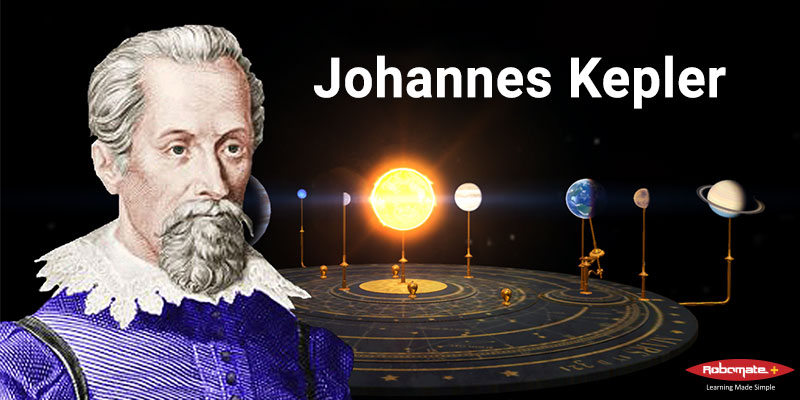Johannes Kepler, a German mathematician, astronomer, and astrologer was born on December 27, 1571. He is a prominent personality of 17th century.
Johannes Kepler Early Work

He started as a mathematics teacher at a seminary school in Graz and later went onto become an associate of Prince Hans Ulrich von Eggenberg
He worked as an assistant to the astronomer Tycho Brahe in Prague, and imperial mathematician to Emperor Rudolf II, Matthias and Ferdinand II.
He was also a mathematics teacher in Linz, and an adviser to General Wallenstein
His contribution in the field of optics led to improvement of refracting telescope (the Keplerian telescope). The telescope was mentioned among great discoveries along with the telescope discovered by Galileo Galilei.He was also a member of the Accademia dei Lincei in Rome.
The Scope and Excitement of Physics
Johannes Kepler’s Contribution
Johannes Kepler bought new insights in the field of astronomy and astrology. He added religious and spiritual comments to these elements and developed a theory that God created the world according to a defined plan through the natural light of reason. Kepler defined astronomy as “celestial physics” as “an excursion into Aristotle’s Metaphysics” and as “a supplement to Aristotle’s On the Heavens“. The studies by Kepler has changed the definition of astronomy from physical cosmology to universal mathematical physics
Johannes Kepler’s Prominent Works
- Kepler’s laws of planetary motion (his works based on Astronomia nova, Harmonices Mundi, and Epitome of Copernican Astronomy)
- Kepler conjecture
- Rudolphine Tables
It was believed by previous scientists that all the planets and the sun orbit around the earth. However scientists like Copernicus hypothesized that the earth and other planets orbit the sun. However, this theory was rejected by the Church and other prominent personalities. Keplers’ work was highly appreciated by Danish astronomer, Tycho Brahe, who soon realized his potential and didn’t give him complete information about planetary motions. But when Brahe died, Kepler accessed this information and with this he could analyze the different speeds and distances of the planet observed at different times. With the available details Kepler formulated the Kepler’s Laws of Planetary Motion. “CBSE Syllabus for Class 11 Physics” covers Kepler’s laws of planetary motion. There are three laws
- Kepler’s First Law- Law of Orbits: The planet orbits around a star (sun in solar system) and follows an elliptical path
- Kepler’s Second Law- Law of Equal Areas: The planet and the star if joined by an imaginary line then they sweep equal area in equal interval of time.
- Kepler’s Third Law- Law of Harmonics or Law of Periods: The Square of revolution time is proportional to the cube of the semi major axis of the elliptical orbit formed.











